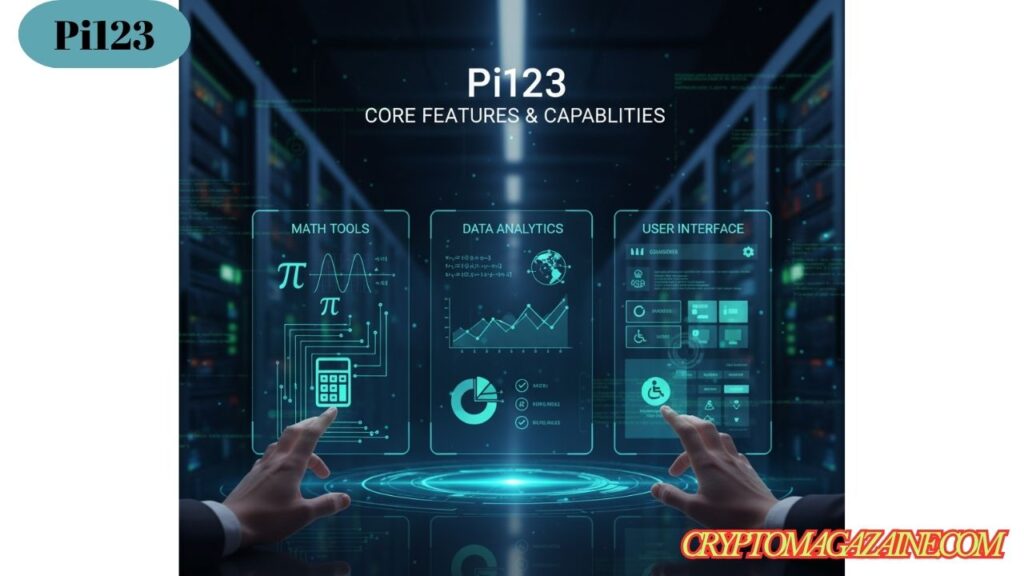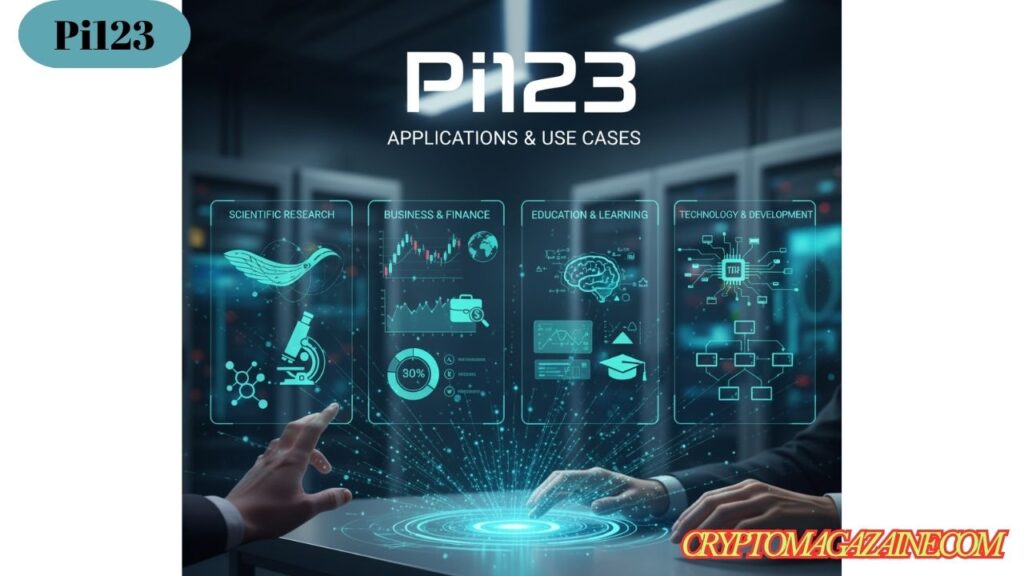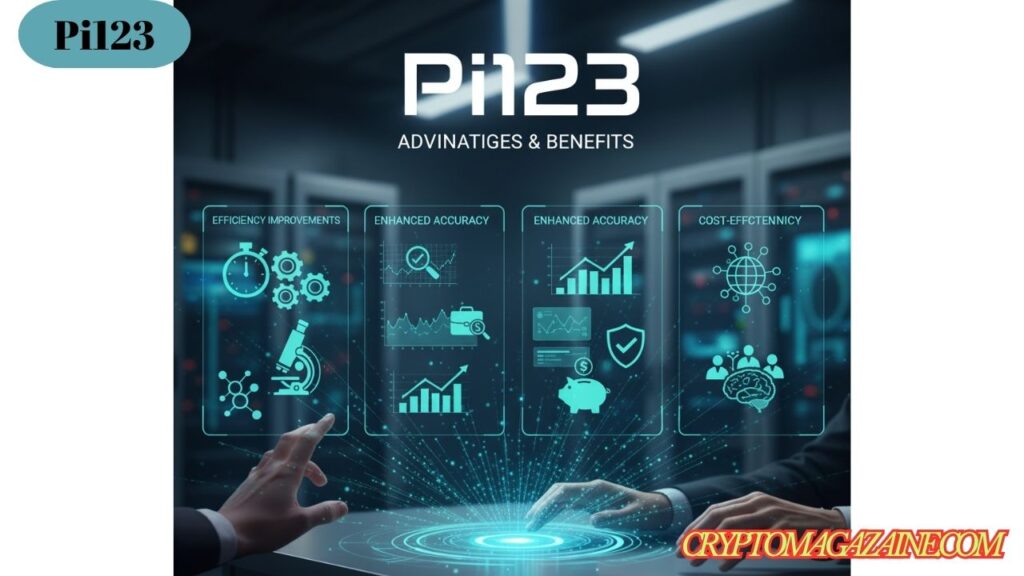What is Pi123?
Pi123 represents a groundbreaking computational tool designed to simplify complex mathematical operations and enhance data processing capabilities. This innovative platform has emerged as a reliable solution for users seeking precision in their calculations, particularly those involving the mathematical constant pi (π). The tool serves researchers, students, professionals, and anyone requiring accurate mathematical computations in their daily work.
The development of this platform stems from the growing need for accessible yet powerful calculation tools that can handle intricate mathematical problems without requiring extensive technical expertise. Pi123 bridges the gap between professional-grade computational software and user-friendly interfaces, making advanced mathematics accessible to a broader audience.
The Connection to Pi (π)
The relationship between this computational tool and the mathematical constant pi forms the foundation of its capabilities. Pi, representing the ratio of a circle’s circumference to its diameter, appears in countless mathematical formulas across various disciplines. This platform provides enhanced precision when working with pi-related calculations, ensuring users receive accurate results for their projects.
Mathematical significance becomes particularly evident when dealing with geometry, trigonometry, physics, and engineering calculations. The tool’s algorithms are optimized to handle these computations with remarkable accuracy, reducing the margin of error that often accompanies manual calculations or basic calculator functions.
Why Pi123 Matters
In modern data processing environments, the relevance of reliable computational tools cannot be overstated. Organizations across industries increasingly depend on accurate calculations to drive decision-making processes, develop innovative solutions, and maintain competitive advantages in their respective fields.
The growing importance of this platform manifests in various sectors, from scientific research laboratories to financial institutions. Its problem-solving capabilities extend beyond simple arithmetic, offering users the means to tackle complex mathematical challenges that would otherwise require multiple tools or extensive manual work.
Core Features and Capabilities

Mathematical Calculation Tools
The platform excels in handling complex mathematical computations that range from basic operations to advanced formulas. Users can perform pi-based calculations with exceptional precision, ensuring that results meet the stringent requirements of professional and academic work.
Algorithm optimization plays a crucial role in delivering fast, accurate results. The system processes formulas efficiently, allowing users to focus on interpreting results rather than worrying about computational accuracy or speed limitations.
Data Processing Functionality
Real-time data analytics capabilities enable users to process information as it becomes available, facilitating immediate insights and responses. The high-speed processing infrastructure ensures that even large datasets are handled smoothly without significant delays.
Data-driven decision-making receives substantial support through intuitive visualization options and analysis tools. Integration with existing systems allows organizations to incorporate this platform into their current workflows seamlessly, minimizing disruption while maximizing benefits.
User Interface and Experience
Ease of use stands as a primary design consideration, with the interface crafted to accommodate users of varying technical skill levels. The accessibility features ensure that individuals from different backgrounds can navigate the platform effectively.
Interface design principles prioritize clarity and functionality, presenting tools and options in logical arrangements that reduce confusion. The learning curve remains relatively gentle, with comprehensive onboarding processes helping new users become productive quickly.
Customization options allow users to tailor their experience according to specific needs and preferences, creating personalized workflows that enhance productivity and satisfaction.
Technical Specifications
Architecture and Design
The system architecture reflects careful planning and robust engineering practices. The technology stack incorporates modern programming frameworks and libraries that ensure stability and performance across different operating environments.
Processing algorithms leverage efficient computational methods to deliver results promptly. Performance benchmarks consistently demonstrate the platform’s ability to handle demanding tasks while maintaining accuracy and reliability.
Accuracy and Precision
Calculation accuracy standards meet or exceed industry requirements, providing users with confidence in their results. Error handling mechanisms identify and address potential issues before they affect output quality.
Quality assurance measures include rigorous testing protocols and validation processes that verify functionality across various scenarios. These safeguards ensure that users receive dependable performance regardless of the complexity of their calculations.
Integration Capabilities
API availability enables developers to incorporate the platform’s functionality into custom applications and workflows. Third-party integrations expand the tool’s utility, allowing it to work alongside other software solutions commonly used in professional environments.
Compatibility with other tools ensures smooth data exchange and process coordination. Cross-platform functionality means users can access the platform from different devices and operating systems without compromising features or performance.
Applications and Use Cases

Scientific Research
Physics calculations benefit tremendously from the platform’s precision and speed. Researchers can model complex phenomena, analyze experimental data, and verify theoretical predictions with confidence in their computational results.
Engineering applications span numerous disciplines, from structural analysis to fluid dynamics. The tool supports the intricate calculations required for design optimization, safety analysis, and performance prediction.
Astronomy and space science projects utilize the platform for orbital calculations, celestial mechanics, and data analysis from telescope observations. Laboratory research across various scientific fields depends on accurate mathematical tools for experiment design and result interpretation.
Business and Finance
Financial modeling requires precise calculations for risk assessment, investment analysis, and portfolio optimization. The platform provides the computational backbone for these critical business functions.
Risk analysis becomes more sophisticated and reliable when supported by accurate mathematical tools. Business intelligence initiatives gain value from the platform’s ability to process and analyze large datasets efficiently, revealing patterns and insights that inform strategic decisions.
Education and Learning
Teaching mathematical concepts becomes more engaging when educators have access to tools that demonstrate principles clearly and accurately. Students benefit from hands-on experience with professional-grade computational resources.
Academic research support extends across disciplines, from pure mathematics to applied sciences. Educational institutions adopting this platform report improved learning outcomes and enhanced research capabilities.
Technology and Development
Software development applications include algorithm testing, performance optimization, and computational modeling. Computer science research leverages the platform for theoretical work and practical experimentation.
Algorithm development benefits from quick testing and validation capabilities. Technical computing tasks across various technology sectors find support in the platform’s comprehensive feature set.
Advantages and Benefits

Efficiency Improvements
Time-saving capabilities emerge as users complete complex calculations in seconds rather than minutes or hours. Simplified workflows reduce the steps required to achieve desired results.
Automated processes eliminate repetitive manual work, allowing users to focus on analysis and interpretation. Workflow optimization features help organizations streamline their operations and improve productivity across teams.
Enhanced Accuracy
Reduced human error represents one of the most significant advantages of using computational tools over manual methods. Consistent results ensure that repeated calculations yield identical outcomes, building trust in the process.
Precision improvements directly impact work quality, particularly in fields where small errors can have serious consequences. Reliability factors contribute to the platform’s reputation as a dependable tool for critical calculations.
Cost-Effectiveness
Resource optimization helps organizations accomplish more with existing budgets and personnel. The return on investment becomes apparent as users complete projects faster and with fewer errors requiring correction.
Operational cost reduction occurs through improved efficiency and decreased need for multiple specialized tools. Scalability benefits mean the platform grows with organizational needs without requiring complete system overhauls.
Accessibility
The user-friendly interface removes barriers that might prevent individuals from utilizing advanced computational tools. Availability to diverse user groups ensures that the platform serves broad audiences regardless of technical background.
Learning resources provide comprehensive support for users at all skill levels. Community support creates networks where users share knowledge, troubleshoot problems, and discover new applications for the platform.
Comparison with Alternatives
Traditional Calculation Methods
Manual calculations versus pi123 represents a stark contrast in speed, accuracy, and capability. While manual methods provide educational value and fundamental understanding, they cannot match the efficiency of automated computational tools.
Time and accuracy comparisons consistently favor the platform, particularly for complex or repetitive calculations. Complexity handling differentiates modern computational tools from traditional approaches, enabling users to tackle problems that would be impractical or impossible to solve manually.
Competing Software Tools
Feature comparisons reveal distinct advantages in specific areas while acknowledging that different tools serve different purposes. Pricing differences reflect varying target markets and feature sets, with this platform offering competitive value for its capabilities.
Performance benchmarks provide objective measures of speed and accuracy across standardized tasks. Unique selling propositions include the combination of power, accessibility, and specialized features that distinguish this platform from alternatives.
When to Choose Pi123
Ideal use scenarios include situations requiring precise pi-related calculations, frequent mathematical work, or integration with existing systems. Understanding limitations and constraints helps users make informed decisions about tool selection.
Decision-making factors encompass project requirements, budget considerations, technical infrastructure, and user skill levels. The platform excels in environments where accuracy, efficiency, and ease of use collectively matter.
Getting Started with Pi123
Installation and Setup
System requirements remain modest, ensuring the platform runs on standard computing hardware without specialized equipment. The download and installation process follows straightforward procedures that most users complete without assistance.
Initial configuration involves basic settings that personalize the user experience. Account creation, when applicable, provides access to cloud features, saved preferences, and collaborative capabilities.
Basic Tutorial
First steps guide new users through essential functions and navigation. Simple calculation examples demonstrate core capabilities while building user confidence.
The navigation guide introduces interface elements and explains their purposes. Common functions overview prepares users to handle typical tasks they’ll encounter in regular use.
Learning Resources
Documentation availability ensures users can find detailed information about features and procedures. Video tutorials offer visual learning experiences that complement written materials.
User guides provide step-by-step instructions for specific tasks and workflows. Training materials support both individual learning and organized educational programs.
Advanced Features and Tips
Advanced Calculation Techniques
Complex formulas receive specialized handling that optimizes performance and accuracy. Custom algorithms allow users to implement unique computational approaches tailored to specific problems.
Batch processing enables efficient handling of multiple calculations or large datasets. Optimization strategies help users extract maximum performance from the platform’s capabilities.
Best Practices
Recommended workflows reflect accumulated wisdom from experienced users and developers. Efficiency tips help users accomplish tasks with minimal effort and time investment.
Error prevention strategies reduce the likelihood of mistakes that could compromise results. Performance optimization techniques ensure the platform operates at peak efficiency.
Troubleshooting Common Issues
Frequent problems and solutions address issues users typically encounter during regular use. Error messages receive clear explanations that help users understand what went wrong and how to fix it.
Support resources provide multiple channels for obtaining assistance. Community forums create spaces where users help each other solve problems and share discoveries.
Real-World Success Stories
Case Study 1: Scientific Research
A university research team faced challenges modeling complex gravitational interactions for their astrophysics project. Traditional tools proved either too slow or insufficiently accurate for their needs.
Implementation of this platform transformed their workflow, enabling calculations that previously required hours to complete in minutes. Results demonstrated accuracy improvements that strengthened their research conclusions.
Outcomes included faster project completion and enhanced confidence in published findings. Lessons learned emphasized the importance of choosing appropriate tools for specific research requirements.
Case Study 2: Business Application
A financial services firm struggled with risk analysis calculations that demanded both speed and precision. Their existing tools created bottlenecks in decision-making processes.
The solution approach involved integrating the platform into their analytical workflow. Measurable benefits included 40% faster analysis completion and improved accuracy in risk predictions.
ROI analysis revealed significant value from reduced errors and enhanced analytical capabilities. The firm expanded platform usage across additional departments following initial success.
Case Study 3: Educational Setting
A mathematics department sought tools to enhance student engagement and understanding of complex concepts. Traditional teaching methods left some students struggling with abstract ideas.
The implementation strategy incorporated the platform into coursework and laboratory sessions. Student outcomes showed improved comprehension and increased enthusiasm for mathematical subjects.
Institutional feedback praised the platform’s contribution to educational goals. Faculty members reported that students demonstrated better problem-solving skills and deeper conceptual understanding.
Future Developments
Upcoming Features
Planned enhancements address user feedback and emerging needs. The roadmap overview indicates continued investment in platform development and improvement.
Beta features provide early access to new capabilities for users willing to test experimental functionality. Community-requested additions demonstrate responsiveness to user needs and preferences.
Industry Trends
The evolution of calculation tools reflects broader technological progress and changing user expectations. Emerging technologies create opportunities for enhanced capabilities and novel applications.
Market predictions suggest continued growth in demand for accessible yet powerful computational tools. The platform’s position in the market remains strong due to its combination of features, performance, and user support.
Long-term Vision
Development goals emphasize sustained innovation and quality improvement. Expansion plans include new features, enhanced integrations, and broader platform availability.
Innovation initiatives explore cutting-edge computational techniques and user experience enhancements. Sustainability considerations ensure the platform remains viable and relevant for years to come.
Community and Support
User Community
Forums and discussion boards facilitate knowledge sharing and peer support. User groups form around specific applications or industries, creating focused communities of practice.
Networking opportunities arise through community interactions, connecting users with similar interests or challenges. Collaboration platforms enable joint projects and shared problem-solving efforts.
Customer Support
Support channels available include email, chat, and phone assistance depending on subscription level. Response times meet or exceed industry standards for technical support services.
Help desk resources provide self-service options for common questions and issues. Premium support options offer enhanced service levels for users with critical needs or complex requirements.
Contributing to Pi123
Feedback mechanisms encourage users to share experiences and suggestions. Feature requests receive consideration from development teams planning future enhancements.
Bug reporting processes ensure that issues are documented, tracked, and resolved efficiently. Community contributions extend beyond feedback to include shared resources, tutorials, and use case documentation.
Conclusion
Summary of Key Points
The platform delivers exceptional value through its combination of power, accuracy, and accessibility. Main benefits include time savings, improved accuracy, cost-effectiveness, and comprehensive feature sets that serve diverse user needs.
Critical features encompass advanced mathematical capabilities, efficient data processing, and seamless integration options. The value proposition centers on providing professional-grade computational tools with user-friendly interfaces at competitive prices.
Who Should Use Pi123?
The target audience includes students, researchers, engineers, financial analysts, educators, and anyone requiring reliable mathematical calculations. Ideal user profiles span technical and non-technical backgrounds, united by needs for accurate computational tools.
Industry recommendations suggest particular value for education, research, engineering, finance, and technology sectors. However, the platform’s versatility makes it suitable for numerous other applications.
Final Recommendations
Getting started requires minimal investment in time and resources, making experimentation low-risk. Next steps for interested users include visiting the platform website, exploring available resources, and considering trial or demonstration options.
Additional resources provide deeper information about capabilities and applications. The call to action encourages users to experience the platform’s benefits firsthand through direct engagement.
Additional Resources
Reference Materials
Official documentation links provide authoritative information about features, procedures, and best practices. Academic papers explore theoretical foundations and practical applications in research contexts.
Technical specifications detail system architecture, performance characteristics, and integration options. White papers examine specific use cases, implementation strategies, and comparative analyses.
Related Tools and Technologies
Complementary software enhances the platform’s utility through integration and workflow coordination. Integration partners offer pre-built connections that simplify setup and use.
Industry standards ensure compatibility and facilitate data exchange across different systems and organizations.
Further Reading
Recommended articles explore advanced topics and emerging trends. Books and publications provide comprehensive coverage of mathematical computation and related fields.
Online courses offer structured learning paths for users wanting to deepen their expertise. Webinars and events create opportunities for live interaction with experts and other users.
For more Updates: Crypto Magazaine






